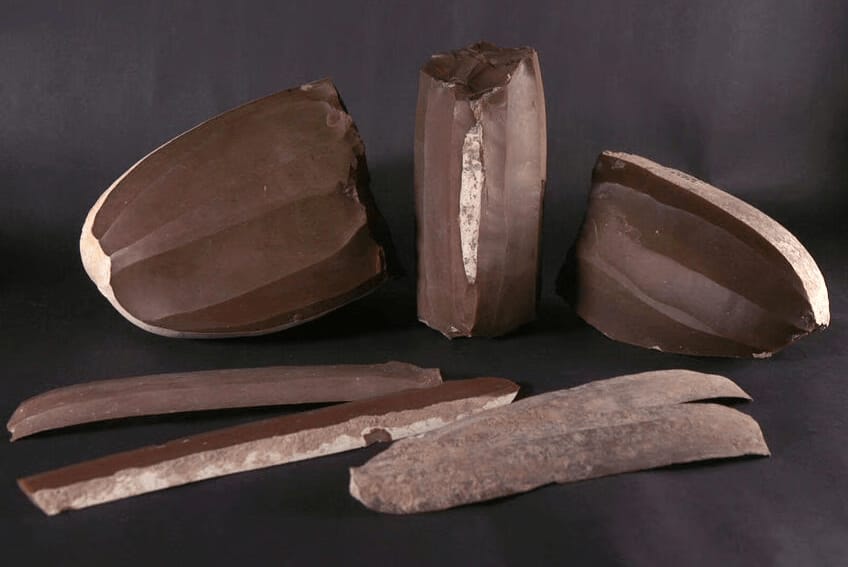- Israfan
- Posts
- Early Bronze Age Workshop Discovery Reveals Insights into Canaanite Industry
Early Bronze Age Workshop Discovery Reveals Insights into Canaanite Industry
5,500-year-old flint workshop in southern Israel reveals advanced technology and complex social structures.

Archaeologists have uncovered a 5,500-year-old flint blade workshop in Kiryat Gat, the first of its kind discovered in southern Israel, the Israel Antiquities Authority (IAA) announced Monday. The rare find sheds new light on the technological expertise and societal complexity of the Early Bronze Age in the Land of Israel.
The salvage excavation, conducted ahead of construction in the Carmei Gat neighborhood, revealed an advanced flint industry at the Naḥal Qomem site also known as Gat-Govrin or Zeita. The discovery includes large flint cores and long, meticulously crafted blades, indicating the presence of a fully organized production center rather than scattered tool remnants.
“This is the first time such a workshop has been discovered in southern Israel,” said excavation directors Dr. Martin David Pasternak, Shira Lifshitz, and Dr. Nathan Ben-Ari. “While evidence of Canaanite blade production has been found in the north and center of the country, this find demonstrates a professional industry operating in the south during the Early Bronze Age.”
The directors emphasized that the site reflects a society capable of complex economic and social organization. “The existence of a sophisticated workshop points to early urbanization and professional specialization, which paved the way for large settlements and new social structures,” they explained.
According to IAA prehistorians Dr. Jacob Vardi and Dudu Biton, the manufacturing of Canaanite blades required exceptional skill and technological innovation. The production process likely involved a lever-and-crane-like apparatus for applying precise pressure to flint cores, resulting in uniform blades used for butchering and agriculture.
Excavations revealed that the site was inhabited for hundreds of years, from the Chalcolithic period through the Early Bronze Age. Covering more than half a kilometer, the settlement includes hundreds of underground pits some lined with mud bricks used for storage, living spaces, industrial activity, and possibly religious or social rituals.
One of the most remarkable findings is the absence of waste fragments, suggesting that production techniques may have been deliberately concealed to protect the knowledge of the expert craftsmen. “We now understand this site served as a hub for distributing Canaanite blades across the Levant,” Dr. Vardi said.
The artifacts from the excavation, including the impressive flint cores, will go on display in Jerusalem this summer, offering a rare glimpse into the ingenuity and sophistication of early Canaanite society.
Share this discovery or subscribe to our newsletter for more updates on Israel’s remarkable archaeological finds.